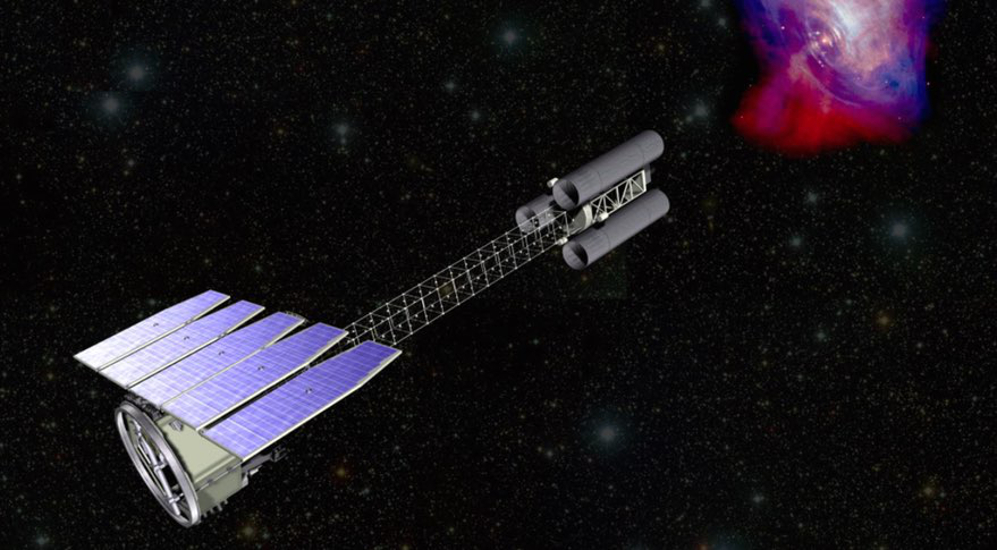
 Credit: NASA
Credit: NASA
Polarized Science
If you think of a light wave as a wave on a string, you can characterize the wave by three properties. The first is the wavelength of the wave, the distance from one crest to the next. The second is the amplitude, the height of each wave crest. The third is the polarization of the wave, that is, the plane of oscillation of the wave. At X-ray energies, clever ways have been developed to determine the amplitude and wavelength of X-ray radiation produced by cosmic sources. The detection of the polarization of X-ray radiation is an even harder task, requiring even more clever techniques. One reason for this is that radiation is usually a mix of waves of different orientations, so that the overall net polarization of the waves is small. Another is that simple techniques which work for lower energy light simply do not work for high-energy X-rays. Nevertheless, the determination of the degree of polarized radiation from X-ray sources like accreting black holes and neutron stars provides otherwise unavailable information about the nature of the environments close to these mysterious objects. NASA has now announced the selection of a new X-ray space observatory, the Imaging X-ray Polarimetry Explorer, or IXPE, which will be the first space telescope to determine the degree of X-ray polarization from a wide variety of X-ray emitting cosmic objects. An X-ray which is observed by the IXPE detectors generates a electron via the photoelectric effect; the IXPE detectors can track the direction of the emitted photoelectron, which is related to the polarization of the incoming X-ray photon. IXPE is expected to launch in 2020.
Published: February 20, 2017
<
HEA Dictionary ● Archive
● Search HEAPOW
● Other Languages
● HEAPOW on Facebook
● Download all Images
● Education ● HEAD
>

Each week the HEASARC
brings you new, exciting and beautiful images from X-ray and Gamma ray
astronomy. Check back each week and be sure to check out the HEAPOW archive!
Page Author: Dr. Michael F. Corcoran
Last modified Tuesday, 27-Feb-2024 10:13:27 EST


